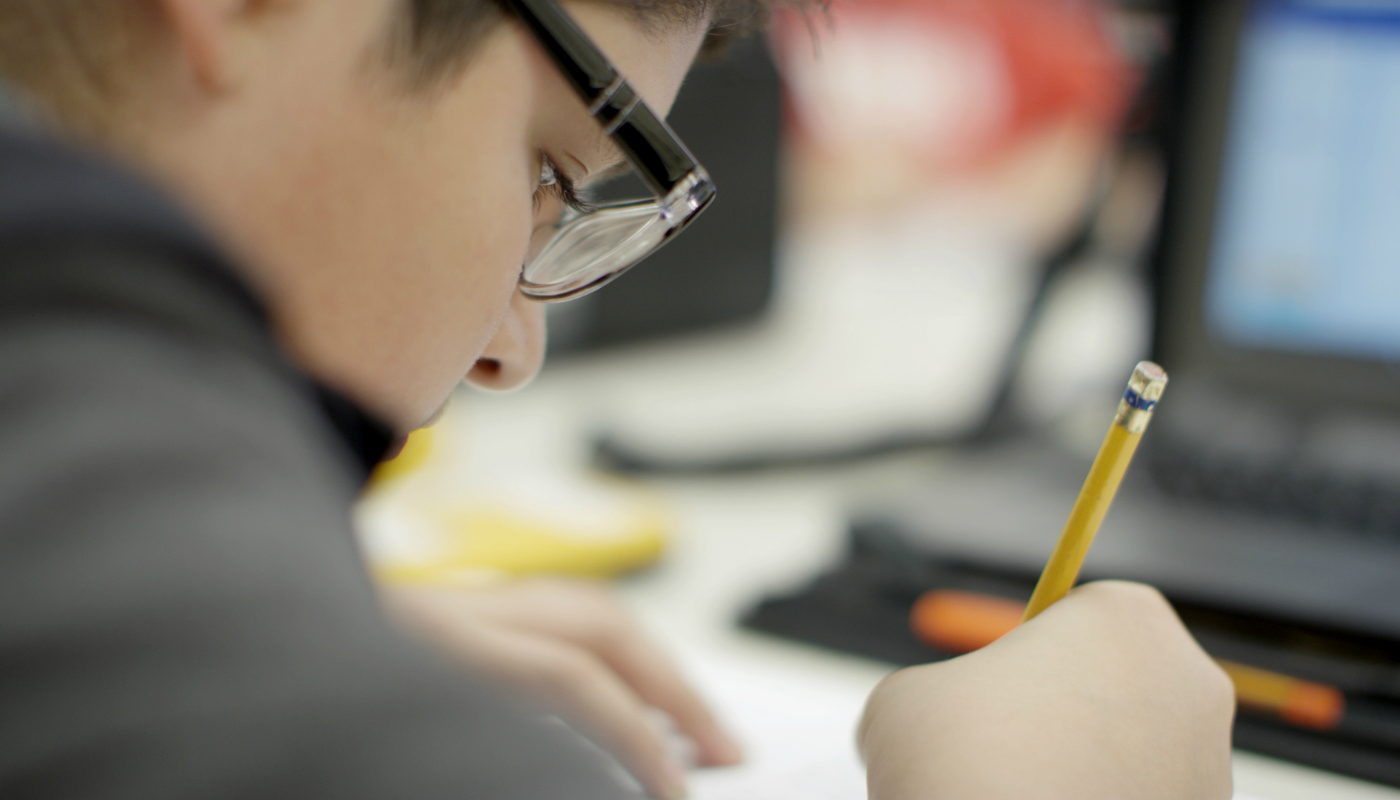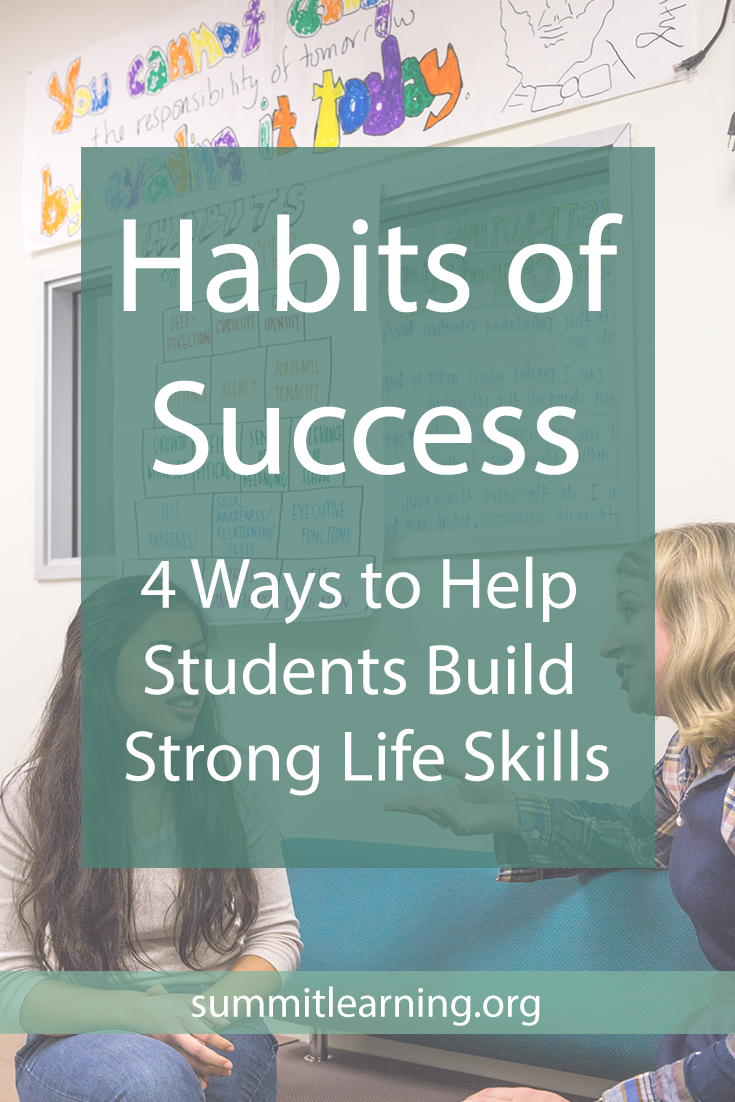
Social-emotional learning is inextricably linked to academic learning. Researchers find that students need Habits of Success — a set of skills, mindsets, dispositions, and behaviors — to succeed in college and life.
If we know characteristics like grit, growth mindset, and self-direction are critical to a student’s future success, what can educators do in the classroom today to develop them?
In a recent interview, Dr. David Yeager, an assistant professor of Developmental Psychology at The University of Texas at Austin and a cited researcher in The Science of Summit, offered four research-backed ways teachers can build these habits in students.

1. Focusing on Changeable, Measurable Habits
Self-direction is one of the habits that Summit Public Schools is exploring new ways to measure in the classroom and via the Summit Learning Platform.
When identifying important Habits of Success, Summit focused less on defining and measuring personality-level traits — which are often situational and can change over longer periods of time — and placed more emphasis on specific learning behaviors that can be impacted by the learning environment and good teaching practices.
Yeager talks about how he has seen Summit work through this process:
“How do you focus on qualities that you could measure each week, or every other week? I’ve seen Summit work through some of the data on students’ playlists [on the Platform, for example] and ask, ‘What kind of challenges are students picking for themselves, and then what can we as educators do or say to encourage students to choose more challenging focus for their work?’ And you can look at that every week… that’s a really critical point.”
The most important takeaway is that Habits of Success, like self-direction, can be developed and improved in learners over time. What’s essential for educators is to identify where students are in developing a particular habit or behavior, to provide targeted interventions or resources, and to then consistently observe and measure that student’s progress week over week.
Summit’s R&D team is currently working with SRI International to identify best practices for measuring self-direction in the classroom. These measurements will then be used to help create better assessment tools, as well as interventions that can be integrated into the Platform, such as prompting teachers when a student has requested to take a content assessment before sufficiently studying content.
2. Creating a Learning Environment for Growth Mindset
An educator’s craft is as much about helping students develop habits, like self-direction and belonging, as it is in teaching learning strategies like note-taking. And research has shown that teacher practices directly impact student development of such social-cognitive qualities.
Expectations about mindsets can change from one classroom to the next, and developing growth mindset is tied very closely to a student’s sense of belonging. This is why it’s so important that educators be aware of how their day-to-day interactions and expectations affect a student’s sense of self-awareness and belonging.
“Qualities like growth mindset can, under some conditions, predict achievement, and under some conditions we can change it; this raises the question of, ‘If I’m a teacher or a school, what do I do every day that reinforces that mindset message?’”
Educators can identify the specific instructional practices and behaviors that help define student mindset in our classroom, including those that may be preventing a particular student from being successful. Yeager references a study done by Indiana University’s Mary Murphy, in which college students received text messages that asked them to share what a teacher had said to make them worry or feel confident about their intelligence.
“Teachers say unbelievable things like, “If this is hard for you, it means you shouldn’t be a science major,” Yeager says of the study. ”What she finds is that, especially for members from stereotyped groups — women in math and science, African-American, Latino and Latina students — belonging really depends in part on the mindset climate in the classroom. It’s contingent upon it. That’s true even for students who personally say that they have a growth mindset.”
3. Providing the Right Feedback for Student Success
Yeager also distinguishes between teachers practicing “false” growth mindset and those truly creating opportunities for students to succeed.
“Lots of teachers now have read the book Mindset and know how to give the right answer to the mindset survey question. But then they end up using what you might call false growth mindset practices… they implement growth mindset by praising kids for trying hard, or telling kids to come after class and work alone on more work.”
What Yeager is referring to is general or “empty” praises of effort that don’t provide students with specific and actionable feedback. For example, instead of saying “great job” to a student who has just revised a draft of a report, a progress-oriented approach might sound like: “I really like the way that you include additional detail on this point; have you thought about also re-organizing this paragraph to make more sense?”
“When you watch the super teachers… they communicate that all students have the potential to learn. And then they create resources and relationships to make sure students meet high standards.”
4. Developing Adaptive and Student-First Teaching Practices
While many forms of social-cognitive assessment have measured student state, or how much a student has or doesn’t have a certain quality, there are limitations to this approach. A state is something that can change over longer periods of time and can be linked to a student’s “anchored” vision of who they are up to that point in their life.
When measuring student progress in developing social-cognitive skills, Yeager suggests that research supports a two-part process for educators: 1) Measure student perceptions of a classroom environment, including teacher behavior; and 2) Align these perceptions with actual student behaviors in the classroom.
“Instead of measuring students’ states, measure students’ perception of the climate and how much the climate supported them,” Yeager says. “Instead of asking how much do you feel like you belong, instead ask, ‘How much did your teacher make you feel like you belong today?’ And that’s something where, as a teacher, even if my students in general feel like they belong… that’s something I can troubleshoot around. I can try something different the next week.”
Though only one part of the whole, Yeager makes the argument that measuring student perception of their teacher and classroom environment is a valid way to determine their reception and readiness to develop social-cognitive skills. A quick one- or two-question survey also provides educators with quick points for reflection at the end of the day, and yields the opportunity to immediately modify and adapt teaching at the individual or whole-group level.
After all, helping students develop strong habits starts with adults modeling those behaviors, skills, and mindsets — like growth mindset and self-efficacy — that are valued within a community.

David Yeager is an Assistant Professor of Developmental Psychology at The University of Texas at Austin. He is a former middle school teacher. His research focuses on adolescent development and behavior change, including topics such as: motivation, aggression, coping, mental and physical health, trust, inequality, and healthy eating. He completed his PhD and MA at Stanford University, and his BA and MEd at the University of Notre Dame. His research has received several awards.

